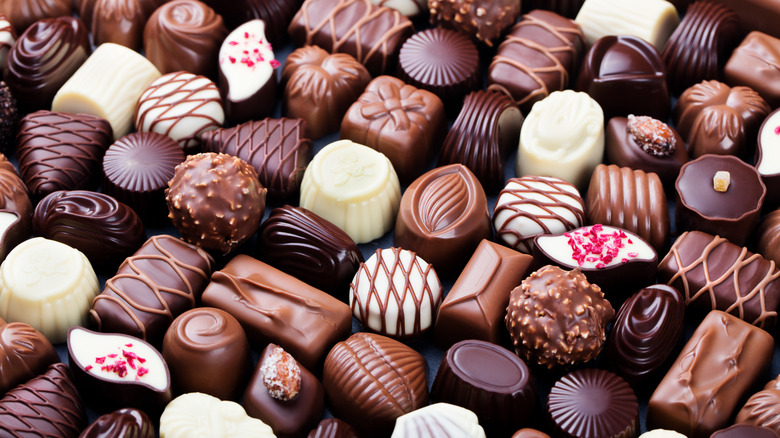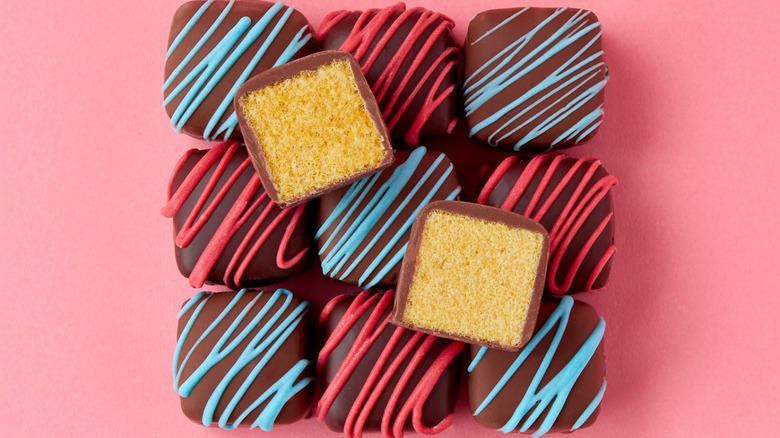The Candy That's Iconic In The Northeast
When you think of food associated with Buffalo, New York, what immediately comes to mind for most people is Buffalo wings, its biggest culinary claim to fame. But for people who live in the city, it could just as easily be beef on weck, its juicier, saltier take on the French dip, or a sweet treat with an unusual name that's iconic in the city and the greater Western New York region: sponge candy.
Crunchy and light sponge candy, which is also popular in nearby Erie, Pennsylvania, gets its name from its small, airy holes that make it look like a sponge. The usually cube-shaped candy is enrobed in chocolate, and crunches when you bite into it, before melting in your mouth with a toasted sugary flavor. It's mostly commonly covered with milk or dark chocolate, but some have white chocolate (which isn't really chocolate), a peanut butter coating, or chocolate with added orange or berry flavor.
Sponge candy is made by heating sugar, corn syrup, and water together in copper kettles, then stirring in gelatin and baking soda. The baking soda leavener makes the molten candy rise, which creates tiny bubbles, and the gelatin sets it, forming its trademark appearance and texture. The large candy batches cool overnight and harden, and are then sawn into bite-sized pieces the next day. The final step is covering the pieces with chocolate, which not only adds chocolatey goodness, it protects the delicate candy from exposure to the air. Heat and humidity can both easily affect the candy's interior and turn it moist and sticky. That's why it's best to eat them fast or store them in a cool, dry place.
Is sponge candy really that one of a kind?
There are nearly identical sweets to sponge candy in other parts of the U.S. and the world, with names like honeycomb candy (one of the unique sweet snacks you'll find at Trader Joe's), fairy food, molasses puffs, seafoam candy, cinder toffee, and hokey pokey. But Buffalo candymakers will argue they're different, saying other candies have bigger holes and crumble in your mouth when you bite into them instead of melting — which comes down to the gelatin, which isn't in the candy elsewhere.
It's also suggested Buffalo's famously cold climate produces a lighter texture than the other candies, because without higher heat and humidity, it absorbs less moisture from the air as it's being made. Some candies also have other ingredient differences, such as honey or molasses being substituted for some of the sugar, and home recipes in particular may be made with vinegar to cause the bubbly rise.
Unique to the area or not, Buffalo has long fully embraced sponge candy since it first began appearing in shops around the 1940s, from origins that remain hazy. There are more than 15 chocolate shops in the city that make it, and Buffalonians celebrate Sponge Candy Day each year on September 21st, after it was first proclaimed by the mayor in 2015. Visitors to candymaker Fowler's, which has been in business in Buffalo since 1910, can take a tour of the factory, where, among all the other sweets, they'll see the magic of sponge candy being made.


